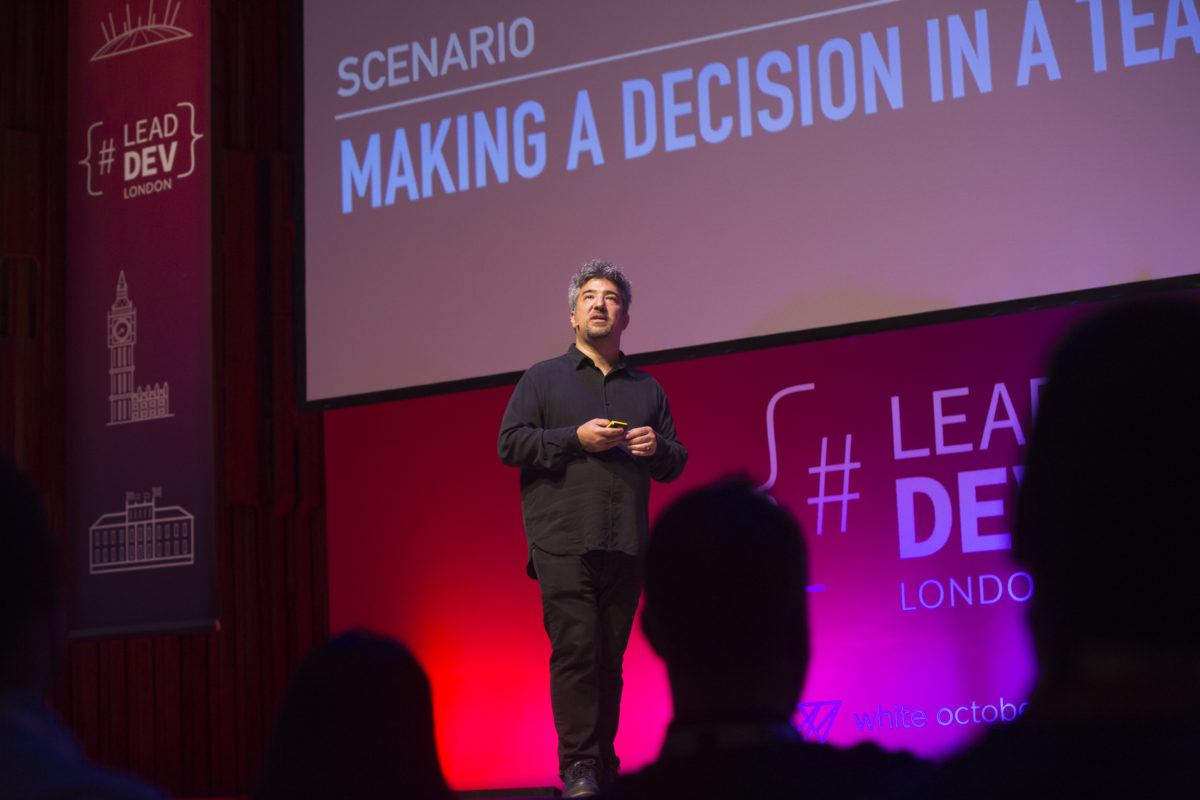This article is the second in a four-part series on writing performance reviews. In the previous article, I wrote about preparing data for the assessment. In this article, I talk about filling out the review form. The next article discusses making salary recommendations. The final post covers delivering the review.
Have everything ready before you begin writing.
Before you begin to write your review, make sure you have the role and level definition for the person’s current role and level. You should also have the description for the job at the next level. If you followed my suggestions in the previous post, you have the folder with earlier reviews, notes from 1:1s and project meetings, the peer feedback, the person’s self-evaluation, and your notes on the work output. Your company’s performance review form and supporting process documentation are necessary as well.
Review your documentation.
If you followed my advice from the last part, you have assembled a large amount of data. You will now go through it all to evaluate the person’s performance relative to the standard. You may find it beneficial to highlight essential information in the documents as you review them or copy/paste them into a new file for easy reference.
If you can, do your review in one sitting. This process helps you build an understanding of the person’s performance. You are creating a context with as much data as possible, so keeping it in your near-term memory is beneficial. If you don’t have enough time to do this in one sitting or think you may be interrupted, take good notes that you can review after a break.
As you read over the data, you should be consciously building a narrative of the review period. Each person will have some highs and lows, but patterns of performance should emerge. After reviewing the data, you should have one or two specific messages to convey to the person about their performance. That is the goal of data accumulation and evaluation.
Start with the review form.
First, read through the review form, making sure you understand the expectation for each question. Then, if you are in doubt, use the company documentation on the process. Get clarifications from your HR partner if necessary.
Understand the role/level definitions.
Make sure you understand the person’s role expectations at the current level and the next level. The current level documentation covers the performance expectations the person should meet now. The next-level documentation is helpful for you to recognize performance beyond expectations.
Go over any previous reviews.
Read all the previous reviews the person has received at the company in chronological order. This review will help you see patterns and trends, and goals met and missed. The essential evaluations are the most recent, especially any from the last couple of years. Take extra care reading these to remind yourself of prior performance discussions (if you wrote them) and understand the current development areas.
What if you disagree with the assessments in reviews written by their previous manager?
Suppose the person is new to your team, or you are a new lead for an existing group. In that case, occasionally, you will read prior reviews and realize that the previous manager used a very different approach to performance than your own. Ideally, everyone is evaluating against the company’s career pathing rubric, but sometimes it is applied differently. In this case, you may need to prepare for some challenging conversations.
You might choose to treat this review cycle as a transitional one, giving people time to adjust to your management style. If you do that, make sure they understand how future reviews will work differently.
Read through your notes from your review of e-mail or messaging exchanges.
Scanning through your messages from the review period will help remind you of any events, successes, or challenges that you may have forgotten about during the review period.
Study the work output to understand the person’s contributions to their projects.
A reminder from the previous article: a person’s code contributions do not reflect the sum of their contributions. Senior developers may contribute less code because they are more efficient or spend time helping other people. Look at code reviews, bug notes, documentation, Architectural Decision Records, or anything else that will demonstrate contributions to the team’s projects.
You’re probably arriving at some opinions at this point.
By this point, you will have started to build the narrative, identified some possible key discussion topics, and formed opinions on the person’s performance. You likely started the process with ideas already, based on your interactions with the person over the review period. The views you bring at the start of the process aren’t necessarily incorrect. Still, they may be untrustworthy because of recency bias, affinity bias, or the person being very good at promoting their accomplishments (or taking credit for others’ work).
Now you will start to review the more subjective data. Does what you find conflict with or reinforce your existing viewpoint?
Review the peer evaluations.
Peer evaluations can be problematic. First, people can be tempted to cheat, colluding with their peers. Second, many people don’t want to criticize their co-workers. Third, they may worry about how their comments reflect on themselves. For these reasons, you will want to read between the lines when reading peer evaluations.
As you read through the peer comments, look for examples that support or challenge the narrative you have been building. If you find many things that challenge your message, you may reevaluate your opinions.
Read the self-evaluation last.
When people are evaluated based on something they produce, they naturally tend to create a narrative that accentuates their positive contributions and minimizes their negative ones. It isn’t necessarily deceptive; it is human nature. Therefore, I always read the self-evaluation last. I don’t want it to influence how I evaluate all the other data. However, the self-evaluation is still relevant because it is the person’s view of how things have gone—their side of the story.
There are a few things I always look for when reading this document: Are there good explanations for some challenges they had during the review period? How aware are they of their challenges and strengths? Are there any comments that might be relevant for the reviews of others on the team? Where are they interested in growing? Finally, is there anything that you can do to support them better in the following review period?
Now, write the review!
Having reviewed all the data, you are now ready to write the review. You have one or two messages for your narrative as well as the data to support it.
Be clear.
One of the biggest mistakes people make when writing a review is trying not to be too negative or too positive. Particularly problematic is using the “compliment sandwich” or vague language to avoid a challenging conversation when delivering the evaluation. Another mistake is creating a “balanced” review by overemphasizing small challenges or successes to offset a too positive or negative narrative.
When someone reads your review, they want to know if they are doing well or not doing well. If the person doesn’t know after reading the evaluation, it is not helpful to them. In addition, they should have a clear connection between their review and their salary adjustment.
They can’t all be extraordinary.
Often, I see inexperienced or poorly trained managers produce reviews for their teams that are uniformly good. “Everyone on the team is doing great!” they say. However, even on the highest performing teams, some members will contribute more than others during a review period.
Universally positive reviews are a signal that a manager is either not promoting team members (so they are all overperforming relative to their level), not paying attention (they are missing things), not challenging the individuals on the team, or setting their expectations too low. Exclusively positive reviews are a signal about the quality of the manager more than the quality of the team.
Yes, you can have a great team where everyone is contributing well. However, each person still has strengths and weaknesses compared to the role/level rubric. You need to understand that you aren’t doing your duty to your team or the company if you don’t evaluate people objectively.
Suppose you want to emphasize that the individuals on your team are outperforming individuals on other teams (often crucial if your organization “stack ranks”). Make that point in the accomplishments noted from each team member. Rating your team universally high just looks like you are trying to game the system.
They don’t all suck.
Something I see less often is a manager rating their team uniformly poorly, usually when a new manager joins an existing group. When I see this, I wonder if the manager is trying to make a statement about the team they inherited, if they are setting the initial base level low so they can show improvement, or if they are setting their bar way too high. As with overly positive reviews, this behavior is often more indicative of issues with the manager than the team.
If you find yourself compelled to give poor ratings to the entire team, challenge yourself to defend your ratings by comparing each person’s accomplishments against the rubric. Are you being too harsh in your judgment or can you justify each of the ratings? Use a “five whys” exercise for each person’s rating. Do find unique causes for each person’s poor performance, or does it all come back to you?
Use the data you collected and analyzed in your review.
As you fill out the form, answer each question to support your message for the recipient. Answer each question with a statement, then provide data that supports your answer.
Avoid phrases that ascribe intent to the person’s actions. Instead, speak to what they did and the measurable effect it had. Do not use expressions like “I think” or “it seems.” These phrases show a subjective interpretation. You want to ground your assessment in facts. Being fact-based avoids any disputes about the review if the person does not like the result.
Provide a plan to help underperformers.
Identifying areas of growth for someone is helpful for them. However, if you are being straightforward, a review for someone underperforming can be demotivating. Rather than finding positive things to balance the assessment at the risk of making it less forthright, you should focus on how you will help the person address their performance issues. If the performance is so poor that the person will put on a performance improvement plan, be specific on what they need to change to move off of the PIP.
Provide next steps for growth for the people performing well.
What are the next steps for those on your team who are overperforming against their role/level? What opportunities can you identify for them? What new responsibilities? Are they on a path for promotion? Where should they focus on continuing their growth?
People who are doing well aren’t usually satisfied with being recognized for their work (although it is imperative to acknowledge their work). They want to know what is next for them. They want more responsibility, more challenge. They want to expand their skills. How will you help them do that in the next review period? They will want to know.
There is nothing wrong with just doing the job.
Most of your team will not be underperforming or overperforming. They will be doing their jobs well. The work that these folks do is essential. They are how the team’s work gets done. Recognize their strengths and weaknesses and tell them how you will support both.
Some are happy to continue to deliver solid performance, and unless your company has an up-or-out culture, this is fine. People will have natural ebbs and flows in their careers.
If the person is ambitious, focus on opportunities for their growth and be clear on what overperforming requires. The company’s career pathing rubric is a reference to show them what is needed.
When you have written all the performance reviews, reread them.
Once you have completed all the performance appraisals, go back and review them. Look for patterns in your assessments. Look for potential unconscious bias. Try to read them as your manager or some future manager of the person would. Are you providing enough information to justify your statements? As this process can take a long time, does it seem that you put less effort into later reviews when you got tired?
Before submitting them to your review system, make sure that you are happy with them individually and as a group. If you have time, you may want to wait a few days after writing the last review before you reread them to give yourself some space.
If your review process includes a grade, ranking, or nine-box classification, ensure that your performance reviews support where you put each person. Also, look to see what the distribution of rankings or grades makes sense. For example, are your recommendations so clustered that it doesn’t seem that you are using good judgment? Does your review justify your choices?
Now that you have written your reviews, be ready with your raise recommendations.
In some companies, salary change recommendations are part of the performance review writing process. It runs as a separate process in other companies (usually near the performance review process on the calendar). Line managers do not have direct input into compensation changes at some companies.
However compensation changes work in your company, it is good to understand how to make compensation decisions/recommendations for your team. That is the subject of the next article in the series.
The four parts of this series are:
- Assembling the data
- Evaluating the data and writing the review (this article)
- Making salary recommendations
- Delivering the review
Thanks to Laura Blackwell for editing assistance








